-
 Bitcoin
Bitcoin $116900
0.00% -
 Ethereum
Ethereum $4280
5.48% -
 XRP
XRP $3.265
-1.45% -
 Tether USDt
Tether USDt $1.000
-0.01% -
 BNB
BNB $807.0
1.41% -
 Solana
Solana $183.1
2.93% -
 USDC
USDC $0.9999
0.00% -
 Dogecoin
Dogecoin $0.2440
6.50% -
 TRON
TRON $0.3357
-0.88% -
 Cardano
Cardano $0.8178
2.63% -
 Hyperliquid
Hyperliquid $44.13
7.45% -
 Chainlink
Chainlink $21.39
9.09% -
 Stellar
Stellar $0.4524
-0.84% -
 Sui
Sui $3.957
2.13% -
 Bitcoin Cash
Bitcoin Cash $572.7
-2.54% -
 Hedera
Hedera $0.2671
1.54% -
 Avalanche
Avalanche $24.77
4.17% -
 Ethena USDe
Ethena USDe $1.001
0.02% -
 Litecoin
Litecoin $122.3
-1.94% -
 Toncoin
Toncoin $3.432
2.26% -
 UNUS SED LEO
UNUS SED LEO $9.007
0.49% -
 Shiba Inu
Shiba Inu $0.00001396
5.26% -
 Uniswap
Uniswap $11.09
1.64% -
 Polkadot
Polkadot $4.155
4.57% -
 Dai
Dai $1.000
0.00% -
 Pepe
Pepe $0.00001253
5.11% -
 Cronos
Cronos $0.1588
2.67% -
 Bitget Token
Bitget Token $4.512
0.05% -
 Monero
Monero $275.0
0.64% -
 Ethena
Ethena $0.7527
15.10%
How to reduce crypto gas fees?
Gas fees on Ethereum vary with network demand, but users can save 30–70% by transacting during off-peak hours or using Layer 2 solutions like Arbitrum and Polygon.
Aug 09, 2025 at 07:07 pm
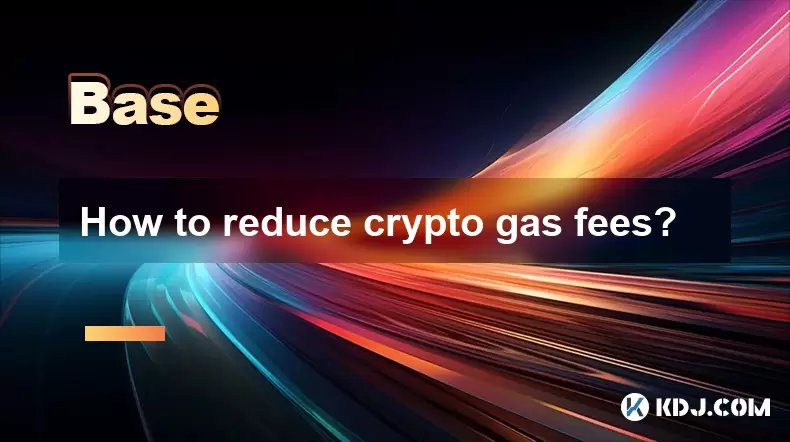
Understanding Gas Fees in Cryptocurrency Transactions
Gas fees are payments made by users to compensate for the computational energy required to process and validate transactions on a blockchain network. These fees are most commonly associated with the Ethereum network, where every operation, from sending ETH to interacting with a smart contract, consumes a certain amount of gas. The gas price is denominated in gwei, a subunit of ETH, and fluctuates based on network congestion. When demand for block space is high, users must offer higher gas prices to have their transactions prioritized by miners or validators. This dynamic pricing mechanism ensures network functionality but can lead to excessively high fees during peak times.
To reduce gas fees, it is essential to understand the components that determine them: gas limit, gas used, and gas price. The gas limit is the maximum amount of gas a user is willing to spend on a transaction. The gas used is the actual amount consumed. The gas price is set by the user and reflects how much they are willing to pay per unit of gas. Multiplying the gas used by the gas price gives the total fee. Overestimating the gas limit doesn’t increase the fee if the transaction uses less, but setting too low a limit can cause the transaction to fail, wasting the gas already spent.
Choosing the Right Time to Transact
One of the most effective ways to reduce gas fees is to transact during periods of low network congestion. Blockchain networks like Ethereum experience varying levels of activity throughout the day. Typically, gas prices are lower during weekends or outside business hours in major financial regions. Monitoring real-time gas price trackers such as Etherscan Gas Tracker, GasNow, or Blocknative Gas Platform can help identify optimal times. These tools provide current gas prices in gwei and often suggest low, average, and high fee tiers.
- Check Etherscan’s Gas Tracker dashboard to view real-time gas prices
- Set up price alerts using tools like MetaMask’s gas fee estimator
- Schedule non-urgent transactions for late-night hours in UTC
- Avoid initiating transactions during known high-traffic events, such as NFT mintings or major DeFi token launches
By aligning transaction timing with network lulls, users can often achieve savings of 30% to 70% on gas costs without compromising security or reliability.
Leveraging Layer 2 Solutions
Layer 2 (L2) scaling solutions are protocols built on top of existing blockchains like Ethereum to increase throughput and reduce transaction costs. These solutions process transactions off the main chain (Layer 1) and later settle them in batches, significantly lowering gas fees. Popular L2 options include Optimism, Arbitrum, zkSync, and Polygon (PoS Chain). Each operates with slight variations but shares the common goal of reducing user fees.
To use a Layer 2 network:
- Add the L2 network to your wallet (e.g., MetaMask) by inputting its RPC details
- Bridge assets from Ethereum mainnet to the L2 using official bridges like Arbitrum Bridge or Polygon PoS Bridge
- Interact with decentralized applications (dApps) hosted on the L2 network
- Withdraw funds back to Layer 1 when needed, keeping in mind withdrawal times and fees
For example, using Arbitrum can reduce swap fees on decentralized exchanges like Uniswap from over $20 on Ethereum to less than $0.10. While bridging incurs a one-time cost, repeated transactions on L2 yield substantial savings.
Optimizing Wallet Settings and Transaction Parameters
Wallet interfaces like MetaMask, Trust Wallet, and Coinbase Wallet allow users to manually adjust gas fees. Instead of accepting the default “average” setting, users can customize the gas price to reflect current network conditions. This requires careful monitoring but offers direct control over costs.
To manually set gas fees in MetaMask:
- Open the transaction confirmation window
- Click “Edit” next to the gas fee section
- Select “Advanced Options” to modify gas price and gas limit
- Enter a lower gas price based on data from GasNow or ETH Gas Station
- Confirm the transaction only if the adjusted fee aligns with network conditions
It’s critical not to set the gas price too low, as transactions may remain unconfirmed for hours or even days. A practical approach is to use the 10th percentile of current gas prices for non-urgent transfers. Additionally, combining multiple actions—such as approving and swapping tokens—into a single transaction using contract aggregation tools can reduce overall gas consumption.
Utilizing Gas Tokens and Fee Abstraction Mechanisms
Gas tokens like Chi (for Ethereum) and GST2 allow users to store gas during low-price periods and use it later when fees are high. These tokens operate by exploiting Ethereum’s refund mechanism: certain operations return unused gas, which can be packaged into a token. When gas prices rise, users redeem these tokens to offset transaction costs.
To use Chi tokens:
- Acquire Chi during periods of low gas prices via platforms like 1inch or GasToken.io
- Hold the tokens in your wallet
- When executing a transaction, use a dApp that supports gas token redemption
- Apply the tokens to reduce the effective gas cost
Another emerging method is ERC-4337 Account Abstraction, which enables paymasters to sponsor gas fees. This allows users to transact without holding native tokens, and third parties can cover fees in exchange for services. Wallets like Biconomy and Stackup integrate this functionality, enabling gasless transactions for end users while shifting fee responsibility to dApp operators.
Exploring Alternative Blockchains with Lower Fees
Not all blockchains impose high gas fees. Networks like BNB Smart Chain, Avalanche C-Chain, Fantom, and Celo offer EVM-compatible environments with significantly lower transaction costs. These chains achieve lower fees through different consensus mechanisms and lower congestion.
To migrate to a low-fee blockchain:
- Use a cross-chain bridge such as Multichain.org or cBridge
- Transfer assets from Ethereum to the target chain
- Access dApps native to that ecosystem (e.g., PancakeSwap on BSC)
- Manage transactions with a compatible wallet like MetaMask
While these networks offer cost advantages, users must evaluate security, decentralization, and bridge risks before transferring funds. Some chains are more centralized than Ethereum, and bridge exploits have occurred in the past.
Frequently Asked Questions
What is the difference between gas price and gas limit?
The gas price is how much you’re willing to pay per unit of gas, measured in gwei. The gas limit is the maximum amount of gas you allocate for a transaction. If the limit is too low, the transaction fails; if too high, the excess is refunded.
Can I cancel a transaction with high gas fees?
Yes, if the transaction is pending, you can replace it by sending a new transaction with the same nonce and a higher gas price, typically using a “cancel” function in wallets like MetaMask. This new transaction should transfer 0 ETH to your own address.
Do hardware wallets affect gas fees?
Hardware wallets like Ledger or Trezor do not inherently reduce gas fees. However, they allow full control over gas settings during transaction signing, enabling manual optimization just like software wallets.
Are gas fees refunded if a transaction fails?
No. If a transaction runs out of gas due to a low limit, the network still consumes the gas used for computation, and no refund is issued. The transaction fails, but the fee is lost.
Disclaimer:info@kdj.com
The information provided is not trading advice. kdj.com does not assume any responsibility for any investments made based on the information provided in this article. Cryptocurrencies are highly volatile and it is highly recommended that you invest with caution after thorough research!
If you believe that the content used on this website infringes your copyright, please contact us immediately (info@kdj.com) and we will delete it promptly.
- Shiba Inu, Pepe, and Remittix: A Tale of Memes, Hype, and Real-World Utility
- 2025-08-10 08:30:12
- Ethereum Price, ETH Tokens, Rally Prediction: Is a New All-Time High In Sight?
- 2025-08-10 08:30:12
- XRP, Elon Musk, and Wealth: A Crypto Conundrum
- 2025-08-10 08:50:12
- Retire Early with Crypto: High-Conviction Plays Beyond Bitcoin
- 2025-08-10 08:50:12
- BlockDAG, Render, and Polkadot: Charting the Course for Long-Term Crypto Dominance
- 2025-08-10 08:55:21
- Toncoin's Ascent: Price Predictions and the VERB Strategy Impact
- 2025-08-10 08:55:21
Related knowledge
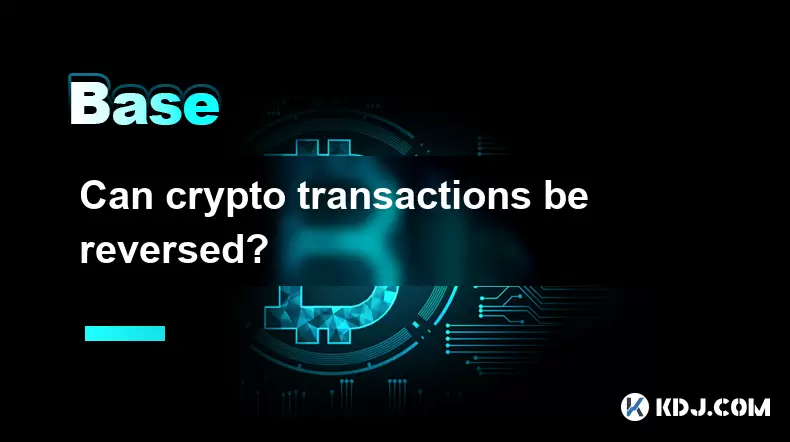
Can crypto transactions be reversed?
Aug 10,2025 at 01:35am
Understanding the Immutability of Blockchain TransactionsCryptocurrency transactions are built on blockchain technology, which is designed to be immut...
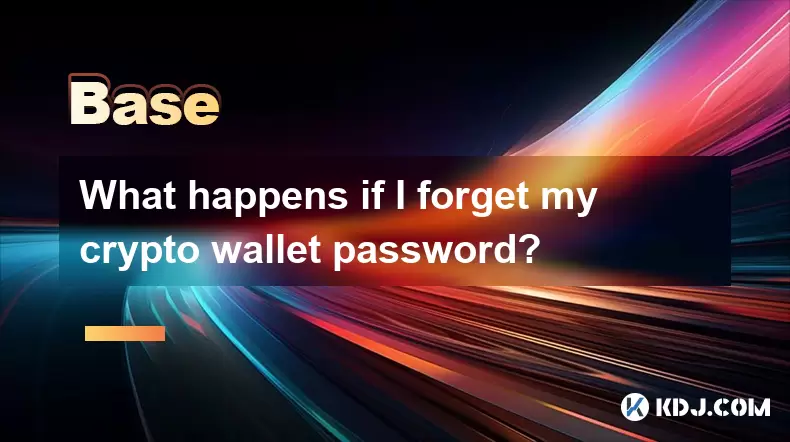
What happens if I forget my crypto wallet password?
Aug 09,2025 at 08:50am
Understanding the Role of a Crypto Wallet PasswordA crypto wallet password serves as a critical security layer that protects access to your digital as...

What is the best crypto portfolio tracker?
Aug 10,2025 at 05:08am
Understanding the Role of a Crypto Portfolio TrackerA crypto portfolio tracker is a digital tool designed to help investors monitor the performance of...

Can you reuse a crypto wallet address?
Aug 08,2025 at 03:49pm
Understanding Wallet Addresses in CryptocurrencyA crypto wallet address is a unique identifier used to send and receive digital assets on a blockchain...
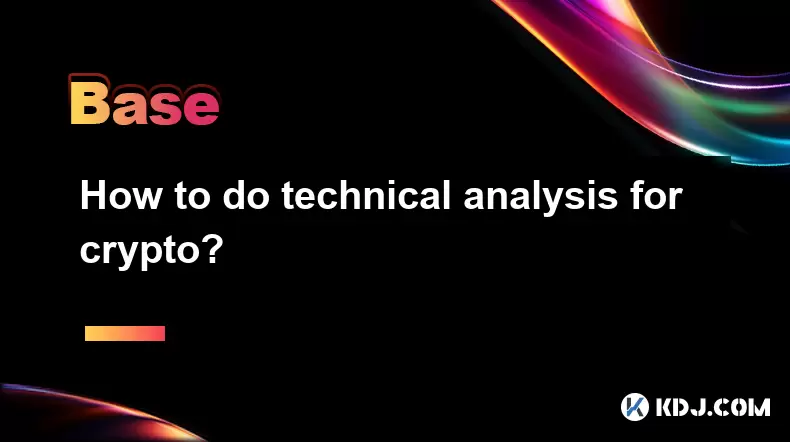
How to do technical analysis for crypto?
Aug 10,2025 at 01:42am
Understanding the Basics of Technical Analysis in CryptocurrencyTechnical analysis in the cryptocurrency market involves evaluating past price movemen...
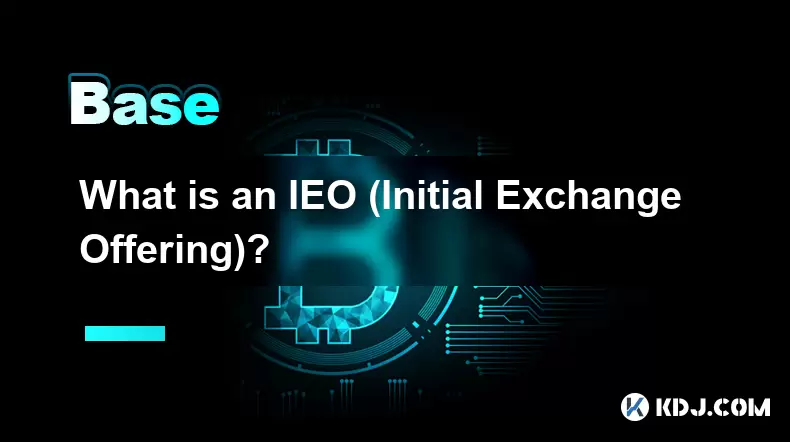
What is an IEO (Initial Exchange Offering)?
Aug 09,2025 at 06:22am
Understanding the Concept of IEO (Initial Exchange Offering)An Initial Exchange Offering (IEO) is a fundraising method used by blockchain-based projec...

Can crypto transactions be reversed?
Aug 10,2025 at 01:35am
Understanding the Immutability of Blockchain TransactionsCryptocurrency transactions are built on blockchain technology, which is designed to be immut...

What happens if I forget my crypto wallet password?
Aug 09,2025 at 08:50am
Understanding the Role of a Crypto Wallet PasswordA crypto wallet password serves as a critical security layer that protects access to your digital as...

What is the best crypto portfolio tracker?
Aug 10,2025 at 05:08am
Understanding the Role of a Crypto Portfolio TrackerA crypto portfolio tracker is a digital tool designed to help investors monitor the performance of...

Can you reuse a crypto wallet address?
Aug 08,2025 at 03:49pm
Understanding Wallet Addresses in CryptocurrencyA crypto wallet address is a unique identifier used to send and receive digital assets on a blockchain...

How to do technical analysis for crypto?
Aug 10,2025 at 01:42am
Understanding the Basics of Technical Analysis in CryptocurrencyTechnical analysis in the cryptocurrency market involves evaluating past price movemen...

What is an IEO (Initial Exchange Offering)?
Aug 09,2025 at 06:22am
Understanding the Concept of IEO (Initial Exchange Offering)An Initial Exchange Offering (IEO) is a fundraising method used by blockchain-based projec...
See all articles

























































































